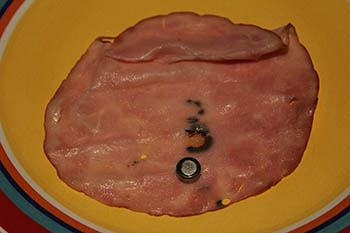Toy safety tips
Every three minutes, a child in the US is treated by an emergency department for a toy-related injury.
Kristel Wetjen, RN, MSN, and pediatric trauma program manager at University of Iowa Stead Family Children's Hospital, offers some helpful tips on how to avoid hazards and ensure your child’s safety when they’re playing with their favorite toys.
Keep track of where items are and when your child is in contact with them. If you have children who are in different age groups, be mindful that toys that are appropriate for older kids still may need to be kept out of the reach of younger children. Electric toys should be UL-Approved. To determine if a product is UL-Approved, look for the UL safety certification Mark. Additionally, make sure all labels read “non-toxic.”
According to the Consumer Product Safety Commission, there were an estimated 2,500 magnet ingestions treated in emergency departments in 2021. If you have any Rare Earth or small disc magnets in your home, it would be best to dispose of them.
Button batteries are the small, flat, lithium batteries used in most items like toys, remote controls, watches, and car key fobs. If swallowed, the button battery starts to release a charge as soon as it comes into contact with the moist lining of digestive or respiratory tracts, causing potential severe burns.
“Button battery injuries can be devastating but are preventable,” says Kristel Wetjen, RN, MSN. “Know the steps to help protect your children and enjoy your holiday season.”
To keep these hazardous parts away from children, be sure to:
-
Be aware of button batteries and their location in your home.
-
Secure items containing button batteries with a screw. If this is not possible, use tape.
-
Tape the battery compartment shut of remote controls.
-
Store loose button batteries out of reach of children.
-
Go to an emergency room immediately if you suspect your child has swallowed a button battery. Injuries related to button batteries can worsen very quickly with minor symptoms.
-
If your child is 12 months old or older and you suspect they may have swallowed a disc battery or button battery -sometime -within the last 12 hours, give them 10 mL (two teaspoons) of honey every 10 minutes. Do not delay an emergency room visit to administer honey.
This button battery was placed on a slice of deli meat for two hours, demonstrating what can happen to a child's internal organs after swallowing a button battery.

If your child is given a toy that is ridden, such as a bicycle, make sure your child is wearing a proper-fitting helmet. To learn more about bike safety, visit our bike safety page. Bike helmets for children and adults can be purchased through the UI Stead Family Children’s Hospital Safety Store for only $12.
To ensure your child’s safety, supervise your child while they are playing with their toys. It is especially important to supervise younger children while they are playing.
After play time is over, be sure to place all toys in a secure place. This way, children will not be able to access the toys when you are not around.
To ensure your child's safety, make sure the toys that you already have are still safe. You can sign up for emails about recalls on certain toy products.
Keep in mind your child's age and brain development for their safety. Many toy-related injuries can be easily prevented if all the possible dangers are considered.
The Safety Store is stocked with injury prevention products that can help keep potential dangers out of the reach of children, such as cabinet and door locks. Anything that can lessen or prevent an injury can be found at the Safety Store.
The National Battery Ingestion Hotline is available 24 hours a day for consultation and can be reached at 1-800-498-8666. As always, in case of an emergency, call 911.